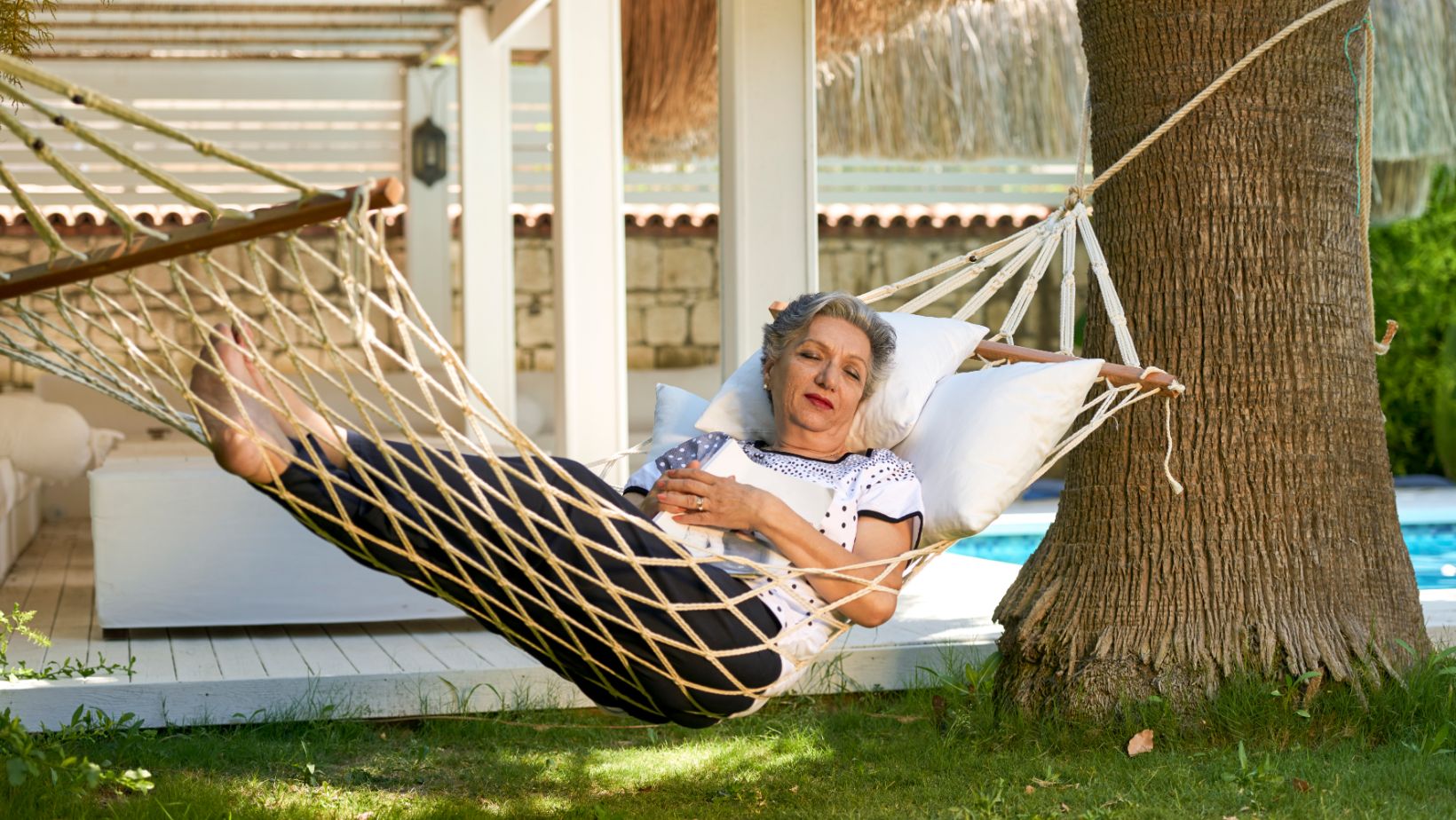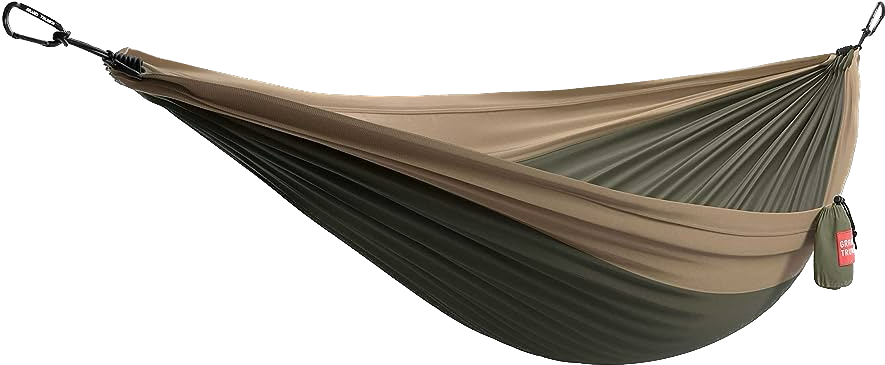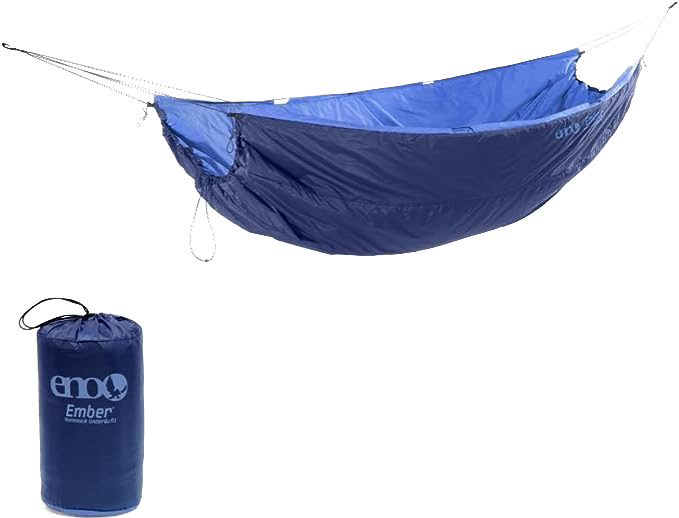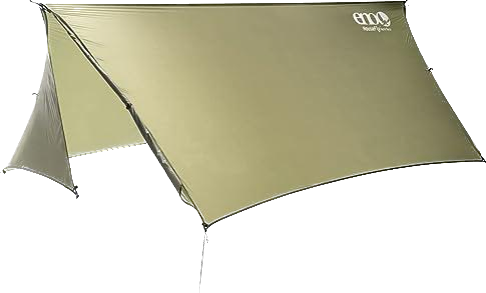As we age, finding comfortable and relaxing ways to unwind becomes increasingly important. Hammocks, with their gentle swaying motion and supportive design, have gained popularity as a peaceful retreat for people of all ages.
In this article, we swing into the benefits and concerns of using hammocks for seniors, exploring the potential impact on their comfort, safety, and overall well-being.
Short Summary – Are hammocks good for old people?
Hammocks are a great option for older people. Seniors that hammock benefit beyond relaxation and meditation. Hammocks help relieve pressure on the spine and joints, potentially reducing back pain experienced by older adults.
Before hammocking, be sure to take extra precautions to make sure elderly adults are safe while hammocking.
- Older adults can experience improved sleep quality, increased blood circulation, and reduced joint pain by sleeping in a hammock.
- Safely enjoy the benefits of hammocking with proper setup, minimized fall risk, and considerations for individual health conditions & sleeping positions.
- Choose the perfect hammock that caters to your needs & lifestyle, indoors or outdoors!
3 Hammocking Benefits for Older Adults

Older adults can experience a range of advantages and benefits from hammocking. A few to mention are that hammocks can help you deep sleep, feel energized, and reduce joint pain.
In this section, we explore a bit deeper into some of the benefits for seniors while hammocking. We’ll discuss the potential relief they can provide for overall better sleep, common soreness, and joint pain, and the improvement of mental calmness.
Deeper Sleep and Relaxation
Nothing is quite like sleeping in a hammock. They offer a unique and relaxing sleeping experience hanging above the ground.
However, sleeping in a hammock offers more than just a unique sleeping experience; it can actually promote deeper sleep and relaxation. Unlike traditional beds, hammocks cradle your body, distributing your weight evenly and reducing pressure points. This gentle rocking motion stimulates the brain’s theta waves, associated with deep sleep and relaxation.
Additionally, hammock sleeping does have several effects to improve sleep for most people. Some of these effects include helping you fall asleep faster, deeper sleep, and no more back pain due to its activation of your vestibular system. According to a study about motion affects the sleeping brain, this shifts brain waves resulting in REM sleep (rapid eye movement) which is key to feeling rested and fresh from a night’s sleep.
Some older adults have replaced their beds with a hammock. By using a hammock stand, these seniors can replace an uncomfortable expensive mattress or flatbed that might cause pressure on your spine.
Essentially when setting up a hammock correctly, it helps provide an ideal sleeping position for ultimate comfort while you catch a good night’s rest!
Alleviation of Joint Pain
If you suffer from joint pain or arthritis, sleeping in a hammock could be a great choice for you.
Hammocks offer a unique sleep surface that can alleviate pressure on your joints and promote a more comfortable sleep experience. The gentle, cradling of a hammock distributes your body weight evenly, reducing stress on your hips, knees, and shoulders. This can help minimize joint inflammation and discomfort.
Additionally, the slight rocking motion of a hammock stimulates blood flow, further aiding in the reduction of joint pain. By choosing to sleep in a hammock, you may find yourself feeling more rested and your joint pain lessened. Because of these benefits, some people have even opted to replace their uncomfortable mattresses with a hammock.
Tired of lying on an uncomfortable mattress?
Calming Effects of Hammocking for Seniors
Seniors can experience the calming effects of sleeping in a hammock, providing them with a restful and serene sleep experience. Hammocks provide a gentle and supportive sleep surface that cradles the body, promoting a sense of calmness and comfort.
Moreover, the gentle rocking motion of a hammock mimics the feeling of being cradled or gently swayed, triggering a release of endorphins and promoting relaxation. The rhythmic movement of the hammock has a calming effect on the nervous system, reducing anxiety levels and inducing a deep sense of tranquility. This can be particularly beneficial for seniors who may experience restlessness or have difficulty falling asleep.
Hammocks also offer a chance to be in nature and enjoy the outdoors, whether it’s in their backyard or during hammock camping trips. Being surrounded by fresh air, gentle breezes, and the sounds of nature further enhances the calming effects of hammocking, creating a peaceful sleep environment that promotes deep relaxation and peaceful sleep.
5 Steps for Elderly People to Hammock Safely

Now that we understand how hammocks can benefit older adults, let’s talk about how to hammock safely as an elderly person. Whether you, the reader, are an elderly person yourself or if you’re reading this to help someone out, you’ll want to follow each of these 5 steps to help everyone be safe.
Step 1: Finding the right hammock gear
Hammock safety starts with the setup. This is especially true for elderly people. There are a few items that you’ll need to safely hammock correctly and a few that will make the experience even more relaxing. I recommend getting together the following:
- A new hammock that has the right weight limit for the user (I recommend either a double hammock or one with a spreader bar. This will give more room and make it easier to get in and out.)
- Hammock Straps
- Sleeping Pad (Optional)
- Sleeping bag (Optional)
- Pillow and Blankets (Optional)
- Trek Pole or Walking Stick (Optional)
- Hammock Stand (If you’re not using trees or posts)
Step 2: Proper Hammock Setup
When setting up a hammock, start by looking for strong trees or posts which can bear the weight of the hammock. Ideally somewhere in the shade to help protect them from the heat and sun. If you’re using a hammock stand, go ahead and find a nice shady spot and set it up. When picking out a spot, be sure to check the ground beneath and try to remove any rocks or hard objects. Nothing is worse than accidentally falling out and landing on a rock.
To evenly distribute pressure, set the hammock at a 30-degree angle from each strap. Then place any additional items like a sleeping pad or pillow inside the hammock.
When setting up the hammock, keep in mind that it should ideally hang mid-hip range of the user and be easy to get in and out of. This is extremely important because this will help avoid the risk of someone falling out of the hammock and getting hurt.
Which leads us to our next step…
Step 3: Getting In and Out of a Hammock – Minimizing Fall Risk
Falling out of the hammock is probably the greatest risk of injury for seniors when hammocking. Additionally, getting in and out of a hammock is when they’re most likely to fall. Thus if you can get in and out of your hammock safely you’ll eliminate your biggest risk for injury. When getting in or out of a hammock, take your time and don’t do any quick or sudden movements. Hammocks do a fairly good job at balancing and getting in and out slowly will ensure the hammock goer’s safety.
One thing you can do is have a trek pole or walking stick nearby. These can be a great idea for those wanting extra support getting in and out. Not to mention, you can use the stick to help swing you back and forth once you’re in the hammock.
Step 4: Sleeping Positions and Accommodating Health Conditions
As mentioned earlier, hammock use can be a great solution for relieving back pain or sleeping in comfortable positions. This is one of the big advantages of hammocks over tents.
If you’re planning on taking a nap in the hammock, try laying slightly diagonal. This will help flatten the hammock and be taking pressure off your back. The equal pressure across your body will help you sleep in a hammock and get better rest.
It should be mentioned that any older adults who have pre-existing health conditions should consult their physicians before hammocking. Those with bed sores or pressure ulcers may not sleep in a hammock and could actually suffer from it. Just make sure any health concerns are addressed before hammocking for your first night.
Overall, if hung correctly, hammock sleeping has proven to be helpful for those suffering from spinal issues such as pains and aches – leading many people to enjoy a better night’s sleep!
Step 5: Don’t get stuck in a Hammock
Lastly, but still very important, don’t get stuck in a hammock. I know a good portion of people might not have trouble getting out of their hammocks, but it’s really worth mentioning – avoid getting stuck in a hammock. Hammocks are designed to keep the user inside the hammock while they relax and sleep. Unfortunately, this same design can also make it difficult for elderly folks to get out – especially those with bad backs.
If you’re worried about you or someone you love getting helplessly stuck in a hammock, relax and keep reading. There are a few solutions that can help.
Starting off with the first, hammock in a group. This is probably the easiest and most recommended option. Hammocking in a group can be fun, bond-building, and safe. If a senior adult were to get trapped or fall out, someone would be nearby to help.
Option 2, have a stick or hiking pole nearby. These can be a lifesaver by giving you the leverage and support you need to get in and out of a hammock.
Lastly, pick a hammock that is easy to get in and out of. These include larger double hammocks, spreader bar hammocks, and rope hammocks. I would steer clear of tight parachute or cotton hammocks. These are great for hammock camping but some of the most difficult to get out of.
Summary
For seniors, hammocks offer a variety of advantages to improve their sleep quality and relieve joint pain. From the proper setup of the hammock to preventive measures against falls and health conditions, these should all be taken into account when older adults decide on using one for rest. The right type with suitable materials can bring positive changes that will contribute towards enhancing overall life enjoyment. Thus, it is worth exploring why investing time or money into purchasing a hammock could be beneficial!
Frequently Asked Questions
Why are hammocks so relaxing?
Spending the night in a hammock offers many advantages and can be incredibly calming due to its comfortable fabric, natural environment around it, and the ability for gentle swaying. This rocking motion has proven to promote better sleep quality as well as provide physical benefits like improved posture or increased spinal support. The peaceful atmosphere created by nature sounds also aids with relaxation even further! Hammocks are widely recognized as great sleeping places that offer multiple health perks making them perfect for those looking for an enjoyable slumber experience.
Are hammocks safe?
Utilizing hammocks for leisure and relaxation outdoors can be made safer with the right installation. With caution during usage, these are a fantastic way to have fun while enjoying nature’s wonders! All it takes is some savvy setup coupled with smart judgment for a safe yet enjoyable hammocking experience.
Can a hammock really help me sleep better?
Studies have demonstrated that hammocks can decrease the time it takes to fall asleep, extend total sleeping hours, and advance slow-wave sleep. Resting in a gentle rocking motion of a hammock may alleviate tension and unease prior to bedtime.
Overall, using a hammock could be an effective way to bettering slumber quality as well as one’s overall feeling of well-being. Yes, swaying comfortably on the cocoon-like design is great for helping you stay calm while drifting into deeper sleep, which also reduces stress levels, making it an effective method aimed at enhancing your night rest standards with profound serenity gains too! Evidence even points out how useful these swinging beds are when looking at reducing latency rates whilst providing more snoozing opportunities altogether, proving their value by being ideal tools used towards amplified shuteye excellence plus enhanced mental health stability.
How do I know which type of hammock is best for me?
When selecting a hammock for yourself, it is important to take into account the different types of materials and features that are available. Think about your sleep position preference, the amount of space needed, and whether you intend on using the hammock indoors or outdoors.
Consider size and weight limits when making your choice so you can choose an item comfortable yet durable enough to fulfill all those needs. Features such as adjustable spreader bars should also be looked at if desired in order to make sure they provide extra comfort while relaxing inside or outside your chosen sleeping area.
What materials should I look for when choosing a hammock?
When selecting a hammock, pick one that is made from quick-drying fabrics such as polyester or even a combination of both polyester and cotton, which guarantees longevity and protection against the elements. Cotton also provides great breathability while still keeping you snugly wrapped up in it!
By bearing these materials in mind when looking for your perfect hammock, you will definitely find exactly what fits your needs!



 Hello there, we're Vira Outdoors!
Hello there, we're Vira Outdoors!

